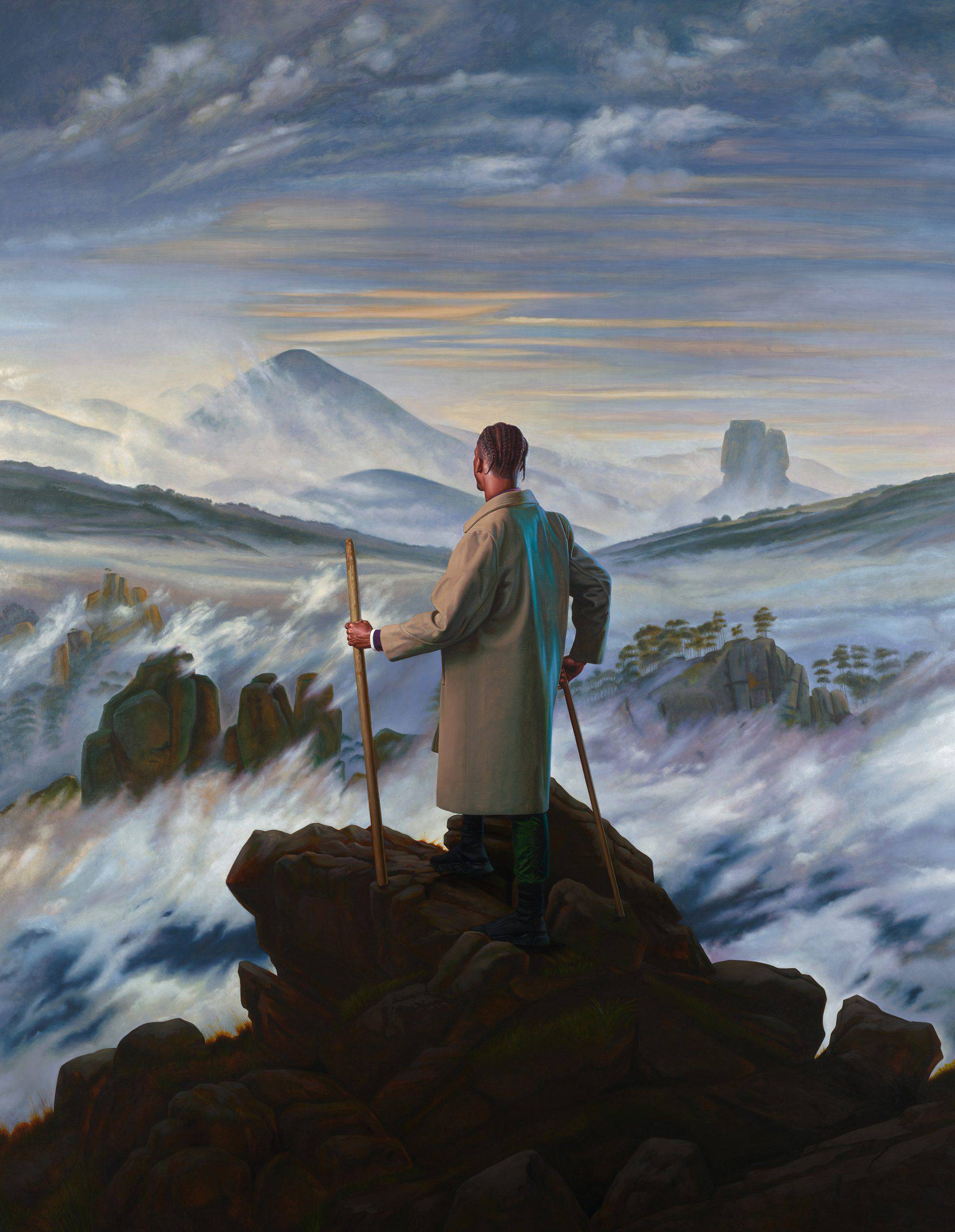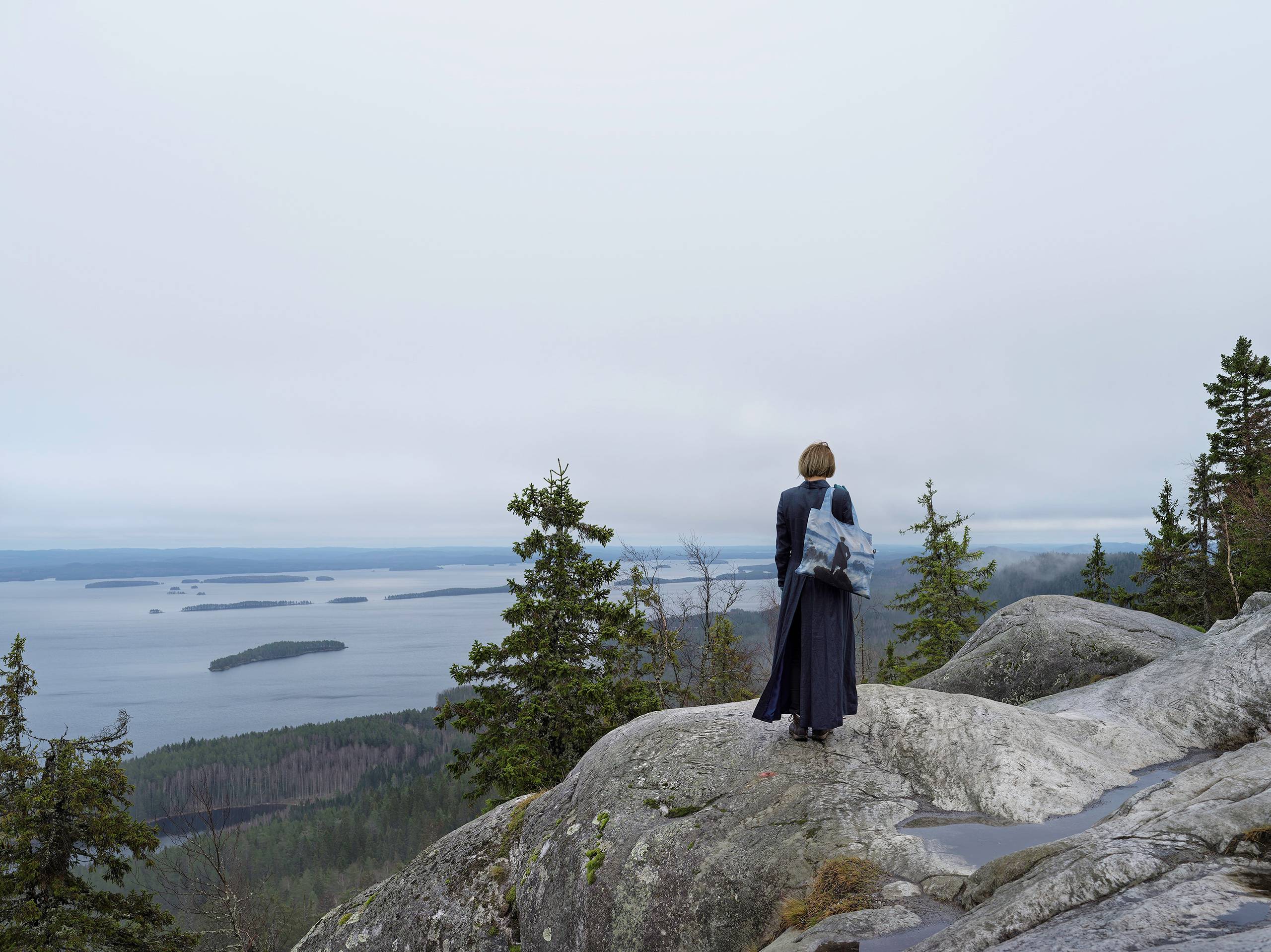In The Studio II
The Trick with the
“Rear-View Figure”
The Wanderer is at the center. Art historians have been speculating about the man’s identity for decades. Until today, it is not known what his mission is or who he is.
Friedrich deliberately leaves any details about the figure open; perhaps he is simply a hiker taking in the sublime view. Perhaps he is a deceased friend, making the picture serve a commemorative function. Friedrich does give one hint – the hiker’s green coat could refer to a forester. Perhaps the heroic pose also points to a German fighter against the French occupation at the time of Napoleon? Was Friedrich thus expressing his support for the German liberation movement in the 1810s?
This ambiguity of the unidentified figure seen from behind is one of the great visual tricks explaining why the picture is still so successful today: it remains mysterious.
The view from behind also arouses a sense of longing. We can put ourselves in the subject’s place and even assume its place in our own photos. And, when looking at those photos at a later date, we remember standing there and commanding the same view.
Today, some people would argue
that the “rear-view figure” isn’t actually that universal.
The image potentially excludes non-white, non-male identities and all those who cannot easily climb a mountain.
The American artist Kehinde Wiley engages with this problem. He adopts Friedrich’s image almost exactly – although his wanderer is Black, and wears contemporary attire. Wiley’s painting is also monumentally large, larger than a baroque portrait of a ruler. That’s also a political statement!


During the COVID-19 pandemic, Finnish artist Elina Brotherus – like many others – often spent time outdoors. That’s when she created this artwork, in which she stands on a rock in the Wanderer’s pose, a Wanderer’s bag across her shoulder. The world is a different place today – and Friedrich’s Wanderer has entered pop culture.